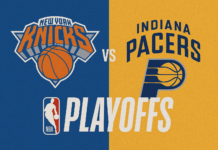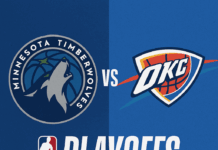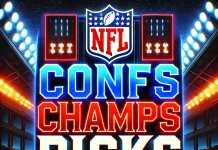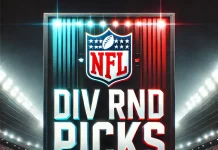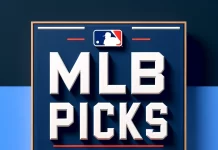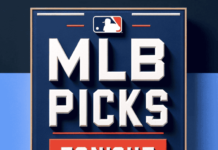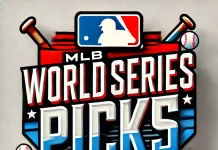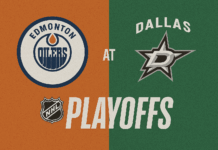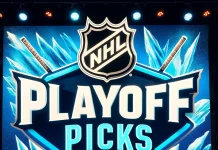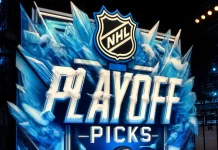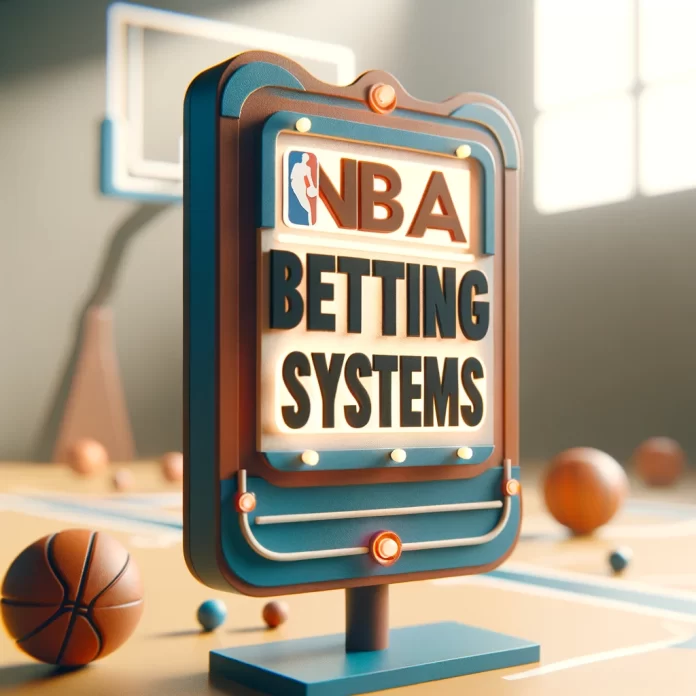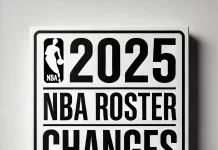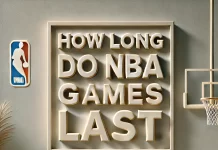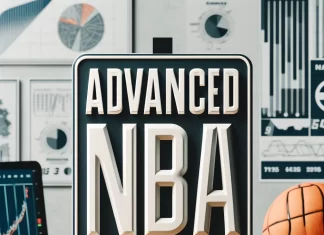In order for long-term success in your NBA betting pursuits, it’s best to have a proven NBA betting system that you can confidently follow.
With NBA basketball, having a reliable betting strategy that you can use regardless of team match-ups gives you a fighting chance against the bookmakers.
When it comes to betting on basketball, advantages can be found by having a strict and defined set of betting rules that you can be rolled out into NBA games no matter who’s in the team lineups on any given night.
The best thing is, you don’t have to create your own betting system out of thin air, as there are already many proven systems to try, and there’s nothing wrong with picking the NBA betting systems from the punters who have come before you. Below, we have given some of the most best NBA betting systems and strategies, with insights on how to implement them.
When used alongside an overall understanding of NBA, these betting systems can help turn even fresh-faced newbies into NBA betting all-stars.
HIGH TOTALS SYSTEM
There aren’t many betting strategies that are more simple to learn and use than the High Totals System invented by Allen Moody, a professional sports-bettor and author of the betting book Becoming a Winning Gambler and Sports Betting Basics.
Allen Moody found that bookmakers often underestimate points totals for NBA non-conference games, so Allen Moody began taking the total points over on every NBA game with an over/under of 220 total points. It’s a basic strategy, however it paid off big-time, with Moody being correct 63.5% of the time for all NBA games meeting that criteria from season 2004-05 to 2008-09.
NBA games such as those were rare 10 years ago, however they are more common now as teams play at a greater pace and hit many more 3-pointers. Back in 2004-05, teams scored at an average of 97.2 ppg. That average climbed to 100.0 ppg in 2008-09, and went even higher to 105.6 ppg during the 2016-17 season. Bookmakers have become clued-in to this total points trend, however there is certainly value remaining to be found in taking the total points over in games with substantially high total-point predictions.
THE BLOWOUT SYSTEM
When teams wins by 15+ points, you’d probably assume they’ve got momentum and will win their next game by 10+ also. But, the opposite is true more often than not.
Sports Insights found that NBA home favorites of 10+ points who are coming off of 15+ point win beat the spread only 42.5% of the time.
So you could also say that, teams that smash opponents are unlikely to do smash a team in their next contest. That drop off could be due to player fatigue or an inflated overconfidence, or perhaps as a result of bookmakers overreacting to their previous blowout performance.
There’s cash to be made by wagering against the spread of a team that just smashed an their previous opponent by 15+ points.
THE BOUNCE BACK SYSTEM
On the counter to the above Blowout System, teams coming off poor offensive games have a impressive record for bouncing back in their next home game.
The number crunchers at Bet Labs studied 250 games where home teams were coming off a poor offensive game and saw that their next games went over the projected total points total around 62% of the time.
When doing your NBA research, look for plus .500 teams that made under 40% from the field in their previous game and then bet the total points over on their next home game.
THE 3 IN 4 GAMES SYSTEM
The league has gone to great lenghts to lower the number of back-to-back schedules that team’s face in recent years, but it’s not unusual for teams to play 3 games in 4 nights. The betting experts at TheSportsGeek.com saw that teams playing in B2B2B’s went over the total points margin 58.8% of the time.
This can be best explained by the fact that defense takes more effort than offense, with players playing with less defensive intensity while tired. No matter the case, it’s advised to take the “total points over” when teams on on the third of a B2B2B.
THE B2B SYSTEM
It’s known that teams find it difficult to win the 2nd game of B2B’s, but they don’t all find it equally difficult.
NumberFire did an interesting study in 2016 where they looked at the effects of B2B’s on teams that were below and above .500 in the NBA league standings.
NumberFire saw that teams over .500 lost 5% more than their average on the 2nd night of a back-to-back, while teams below .500 lost 11% more often than their average on the 2nd night of a B2B. It was also found that whether it was a home or away game played a big factor in the performance of a team. Teams playing the 2nd of a B2B on the road were 18% more likely to lose.
These insights are certainly something to consider when betting on NBA. Also consider a team’s pace of play, their average age, and if the team has needed to adjust to multiple time zones in a short schedule. Each of these factors can cause a significant drop off in performance from game to game.
THE MARTINGALE SYSTEM
It’s just not possible to win every bet you make (unless you have Grays Sports Almanac), but you can still win over the long term through a system like the Martingale System. This strategy requires you to double your wagers on a selected team’s game totals until they win (sounds crazy we know).
Let’s say the LA Lakers are averaging 108.0 ppg and have scored 110.0+ points in their last 5 games. After studying that night’s match-ups, you bet $30 on the Lakers going over 110.0 points in their game against the Thunder. If the Lakers succeed, you win your wager and make a small profit.
If they fail, the Martingale System requires you to take a very deep breath and double your wager to $60 that the Lakers will go over 110 points in their next game against the Suns. If the Warriors score 110 points plus, you will have covered your previous loss and made some extra cash. If they fail, the Martingale System requires you to double your previous bet to $120 and continue to make the same wager until your bet gets over the line and your luck changes.
The keys to the Martingale System are a giant set of balls, patience, a hefty bankroll, and a knowledge of statistical trends. At a certain point, you’ll need to give up if your losses become too much, but if you’ve studied sufficiently, your patience should be paid back.
The Martingale System, requires you to consider a team’s scoring average, player match-ups, team injuries, and the pace of play for each team. These factors will go a long way towards predicting the final score.
THE D’ALEMBERT SYSTEM
The D’Alembert System is similar to the Martingale System. But, it has a lot less financial risk due to its more conservative nature. When using the D’Alembert betting strategy, you select a bet amount and increase it by the same amount should you lose, and decrease it by the same amount should you win.
For example, if you make your bet amount $20. Using this amount as your starting point, you wager $20 on the outcome of an NBA game. Should your wager lose, you bet $20 the following night on the outcome of another game. Should you lose again, you bet $40 on the following game. If you win that game, then you go back to a $20 bet on the next game, and so forth.
The D’Alembert System is less profitable than the Martingale System, however it appeals to bettors with lesser bankrolls who are more void of risk.
THE TUNNEL BETTING SYSTEM
The Tunnel Betting System takes advantage of the fact that competing bookmakers offer different total points lines, while offering the same odds.
For example, if one bookmaker has the total points line for the Bulls vs. Spurs at 218.0 points, while another has it at 215.0 total points. In both cases the Bulls are listed as -9 point favorites.
When using the Tunnel System, you would bet the over (215.0) at one bookmaker, and the under (218.0) at another bookmaker. If the final total score between the Bulls and Spurs is 216.0 or 217.0, you will have won BOTH of your wagers. However, if falls outside of that “Tunnel,” you are still guaranteed to win 1 of your 2 wagers.
Winning just 1 of the 2 wagers will result in a small net loss, since you’ll usually have to lay -110 odds on both wagers. To cash in on the Tunnel System, you’ll need to win both of the 2 bets around 10% of the time. However, given that the “Tunnel” is the most likely outcome, it definitely has the potential to be give you bang for your buck.
The Tunnel System also requires the bettor to do their fair share of study. Although there are small discrepancies between many bookmakers, it’s difficult to find total points lines that are more than than 2 points apart. If you do find one, jump on it!
NO B2B BLOWOUTS
The B2B Blowouts system requires a home team a 10+ point favorite. Once you’ve spotted teams that are 10+ point favorites at home, look at the results from their previous game. If they won the previous game by 15+ points, bet against them. Heavily-favored home teams that just enjoyed a big win only cover the spread 42.5% of the time.
That means that a road underdog facing a heavy home favorite coming off a massive win is a very solid bet ATS with a 57.5% success rate. Since this is ATS (against the spread), this should give some good value and pay out at around even odds. Anything less than -135 moneyline odds will work, which shouldn’t be difficult to find in this case.
NON-CONFERENCE OVERS
In the past, bookmakers have underestimated the scoring in cross-conference matchups. In the Non Conference Overs system, the bettor first looks for a matchup between cross-conference matchups. Once a game in which an East team plays a West team is found, look for the totals points lines offered by the bookmaker.
The bettor wants the total points over-under to be at least 220.0 points, or a little higher.
Despite the high total, betting the “total points over” is the way to profit from this method. Interestingly, Allen Moody, a professional sports gambler (that is noted above int the High Totals System), used this system over 5-years, where it won 63.5% of the time.
At that rate, as long as the “total points over” is being sold as the underdog bet or at least closer to even money than -174 odds, this is a nice wager.
HOME TEAMS BOUNCE BACK OFFENSIVELY
In this NBA betting system, you’ll require offensive averages from the season. The bettor is looking for a teams playing at home who’ve had a poor offensive outing in their last game.
Find teams with plus .500 records who have shot a lower FG% than their average and scored less points than their average ppg.
Teams that fit into this description have surpassed their expected point total and won ATS 62% of the time.
ALSO NOTE: If there’s a home team soul searching after a poor offensive output, and you can bet them ATS at -163 or less, do it. The point spread should move the odds closer to even money, meaning this has great value.
Consider betting the “total points over” also. Totals points betting is not included in this system’s data, however given that it capitalizes off of the same recency bias, it should be a winning bet. This can also provide an opportunity to parlay both bets.
THE 1/3 BETTING SYSTEM
The 1/3 system is another system that is used primarily against the spread.
The 1/3 system is similar to the Martingale system in the way that you increase your stakes, and it’s made to be profitable as long as 2 out of your 6 bets win, which equals 33% or 1/3 (hence the name of the system).
With this system, you make a series of 6 wagers, following the stake plan: X, 2X, 4X, 6X, 8X, 12.5X. Thus, if your 1st bet is $20, the progression of your bets would be $20, $40, $80, $120, $160, and $300.
You continue going through this progression until you’ve profited, at which point you start again.
For example, should you lose your first 3 wagers but win the 4th, you will still be marginally down overall. Despite winning a bet, you proceed to the 5th staking value in the progression. If that bet wins, you start over. If it loses, you continue to the 6th progressive amount.
The 1/3 system can be used with the Zig-Zag betting strategy (covered below) to minimize the chance of losing 4+ games in a series of wagers. For it to work, you’ll need odds of -110, which is the reason we apply this method to point spread betting.
Prior to using the 1/3 betting system, be aware that a long unlucky streak can cost a big chunk of your betting bankroll. Because of this, if you lose the first 5 bets, start over without going forward to the 6th.
THE EARLY SEASON B2B FADE
One of the big frustrations you often hear from NBA coaches and players are about scheduled B2B (back-to-back) games. As the NBA season goes on and fatigue and injury set in, players usually require 24+ hours to recover for optimal performance or their performance is less than their best. The majority of casual bettors treat all B2Bs equally, which is incorrect.
The smart play is to spot the early-season B2Bs, before the long road trips and the harsh physicality of the NBA season take their toll. If you fade the public by wagering on the team playing their 2nd game in 2 nights (preferably within the first month of the season) history suggests that they’ll cover the spread at 58.6%. Indicating that anything below -142 odds will have value, and since this bet is ATS, the odds should be closer to -110, which is great value.
HOME TEAM 10+ POINTS
Here the bettor is looking for an underdog playing at home.
Once again, the bettor is making a bet ATS, so the payout is close to even money. If the home team is a -10.0+ underdog, they cover the spread at around 58%.
Make sure not to make this bet on the ML, because although they cover the spread at an impressive rate, these teams lose the game most of the time. However, with a 58% winning chance, anything closer to even money than -138 is a profitable bet in the long run.
The Home Team 10+ Points system is useful when the road team is getting 70% plus of the betting action. Due to the typical odds in these situations, it is difficult to profit in any big way if you don’t time your bet correctly. However if you can find a home underdog that’s getting 10+ points and only getting 30% action or less, the line movements make this a profitable system overall.
ROAD FAVORITE AFTER BAD LOSS
For this system, you’ll need a favored team to win despite playing on the road who just had a massive loss. Teams that are blown out by 15+ points tend to take it out on their next opponent, particularly if it’s an underdog.
When a team lost their last game by 15+ points and traveled to an underdog’s home court for their next game, the road favorite has won at around 64%. At that winning %, you’ll need a team favored by less than -178 to find decent value.
Another way to use this system and increase your odd of winning is to bet only the first half of games.
The theory is that a team that’s favorite on the road after a big defeat must be a quality team and that the loss must have been an outlier. The best way to remove that humiliating defeat from memory is to smash the next opponent. That extra motivation will likely be more impactful in the 1st half before they settle into playing their typical game.
THE ZIG-ZAG BETTING SYSTEM
The Zig-Zag system can be used for many sports. It is most often used when betting on playoff games in sports that play a best-of series rather than single elimination game.
The Zig-Zag system works under the assumption that bookmakers and novice bettors overreact to recent game outcomes and that playoff teams will respond to losses with extra motivation.
Whichever team lost the last game is the team that you then wager ATS. But, on its own, this system only wins 50.9% of the time.
The system works better when the team recovering from a loss is playing at home, especially when the previous loss occurred on their home court. This raises the odds to around 53%, which is enough to be worthwhile and profitable. To improve chances, add more filters to find home teams that lost their previous game by 3+ points and who won at least 60% of their games through the regular season.
Should this scenario present, the odds of winning ATS are largely dependent on the size of the point spread. If the spread is between -3 and -4.5, the bounce-back home team beats the spread at over 58%. Spreads between -5 and -5.5 aren’t profitable overall, covering at a rate of just 51%, however spreads of -6 plus win between 62% to almost 80% of the time, and that’s damn impressive.
It’s also worth noting road teams who lost their previous game. When a team loses their last game on the road and the spread is between -3.5 and +3.5, they do not to cover the 64.5% of the time. Therefore, if you find such a road team, bet the home team instead, despite the fact that this does not technically fit the Zig-Zag betting system.
The systems covered here are to gambling what bounce passes and free throws are to a basketball team.
Most of the people wagering on NBA are doing so for fun or because they like trying to pick a winners. However, simply picking winners in NBA is a fools game, because even if you are correct most of the time, you’ll likely not make any money in the long run.


